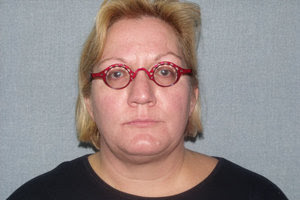Symposium: Freedom of Choice at the End of Life
Patient’s Rights in a Shifting Legal Landscape
A Justice Action Center Symposium
Friday, November 16, 2012
New York Law School
Additional support provided by the American Bar Association Commission on Law and Aging; the National Academy of Elder Law Attorneys; the Elder Law Section of the New York State Bar Association; Compassion and Choices of New York; and Collaborative for Palliative Care, Westchester/NYS Southern Region
More than 13% of all Americans are over 65 years of age; 2% are 85 or older. By 2050 20% of the population will be over 65 and 5% will be over 85. 50% of the over-85 cohort is unable to perform activities of daily living. Of total Medicare expenditures, 25% are for costs in the last 6 months of life.
The concept that individuals have the right to choose the manner and time of their death and the right to decline unwanted treatment has been a relatively recent development, as is the law that a person does not lose these rights upon incapacity. Individual rights are not uniformly recognized in practice, however, and there are many limits on when and how they can be enforced. This conference will address a broad range of issues including impediments to honoring those rights, advance planning tools for persons to ensure compliance with their choices and how to enforce them, legislative and decisional developments, surrogate decision-making for patients whose wishes are not known, pain management and palliative care, hospice, aid in dying, ethical dilemmas in decision making, medical ineffectiveness of treatment (“futility”), concerns of persons with disabilities, the effect of religion on law and policy, and how the media treats these issues.
CONTINUING LEGAL EDUCATION
This program has been approved for a maximum of [] credits of continuing legal education in professional practice for both transitional and non-transitional attorneys. There is no charge for CLE.
REGISTRATION
Conference registration is $50.
CONFERENCE SCHEDULE
[Unless otherwise noted, all events will take place in the Auditorium, Room WA14]
8:15am–9:00am
Registration and Continental Breakfast
9:00am–9:45am
Welcome Remarks and Keynote
Kathryn Tucker, Esq., General Counsel of Compassion & Choices, Inc., will discuss the movement to protect and expand the rights of the terminally ill over the past twenty years, provide an overview of the issues and current state of law and policy, discuss progress and setbacks, and offer thoughts about how these issues will be dealt with in the future.
9:45am–11:00am
Panel Discussion: Taking Control and Preserving Autonomy
Moderator: Peter J. Strauss
- Nadia N. Sawicki, Assistant Professor, Loyola Chicago School of Law; 2003-2009, George Sharswood Fellow in Law and Bioethics, University of Pennsylvania Law School
- Lisa Comeau, Esq., appellate counsel for the patient’s family in Cronin v. Jamaica hospital Medical Center, 60 AD3d 803 (App. Div. 3d Dep’t 2009) a New York lawsuit where the court described the plaintiff as seeking damages for “wrongfully prolonging the decedent’s life by resuscitating him against the express instructions of decedent and his family.”
- David C. Leven, Esq., Executive Director, Compassion & Choices of New York Mary Beth Morrissey, Esq., Ph.D, M.P.H.; President, Collaborative for Palliative Care, Westchester/NYS Southern Region
11:15am–1:00pm
Panel I: Real-Time Critical Issues
- David Muller, M.D., Professor of Medicine and Dean for Medical Education, Mt. Sinai School of Medicine, New York, New York; Director, Visiting Doctors Program
- Gabrielle Goldberg, M.D., Assistant Professor, Geriatrics and Palliative Medicine, Mt. Sinai School of Medicine, New York, New York; Education Director, Hertzberg Palliative Care Institute
- Thaddeus Mason Pope, J.D., Ph.D., Director, Health Law Institute and Associate Professor of Law, Hamline University School of Law
- Bonnie Steinbock, Ph.D., Professor of Philosophy, State University at Albany; founding faculty member, Union Graduate College-Mt. Sinai Bioethics program
- Paul T. Menzel, Professor Emeritus of Philosophy, Pacific Lutheran University
1:00pm–2:15pm
Lunch Keynote
Hon Sol Wachtler, former Chief Judge, New York State Court of Appeals, author of the opinions in Matter of Eichner and Matter of Storar (1981) and Matter of O’Connor (1988), decisions which established New York law with respect to end-of-life decisions for persons who lacked capacity. Judge Wachtler will address the thinking of the court in those early years and his thoughts on the state of the law today.
2:15pm–4:15pm
Panel II: Special People, Special Issues
- Alicia Ouellette, Associate Dean for Student Affairs and Professor of Law, Albany Law school; Professor of Bioethics at Union Graduate College/Mt. Sinai School of Medicine Program in Bioethics
- Rev. Dr. Martha R. Jacobs, B.C.C., Sabatical Pastor – Briarcliff Congregational Church, Briarcliff Manor, N.Y., Author, A Clergy Guide to End of Life Issues, Blogger, The Huffington Post, Coordinator and Adjunct Professor, Doctor of Ministry in Pastoral Care, New York Teological Seminary
- Ann Neumann, Editor, The Revealer,New York University’s Center for Religion and Media; Otherspoon, a blog about religion and end of life care
- Hon. Brian Fischer, Commissioner, New York State Department of Corrections
- Carl J. Koenigsman, M.D., Deputy Commissioner and Chief Medical Officer, New York State Department of Corrections
4:15pm–4:45pm
Plenary Session: How the Media Affects Policy and Individual Rights, from Schiavo to Death Squads
Sherrie Dulworth, R.N., executive healthcare management consultant, Master’s candidate at the Columbia University Graduate School of Journalism
4:45pm–5:00pm
Closing Remarks
5:00pm–5:45pm
Reception























